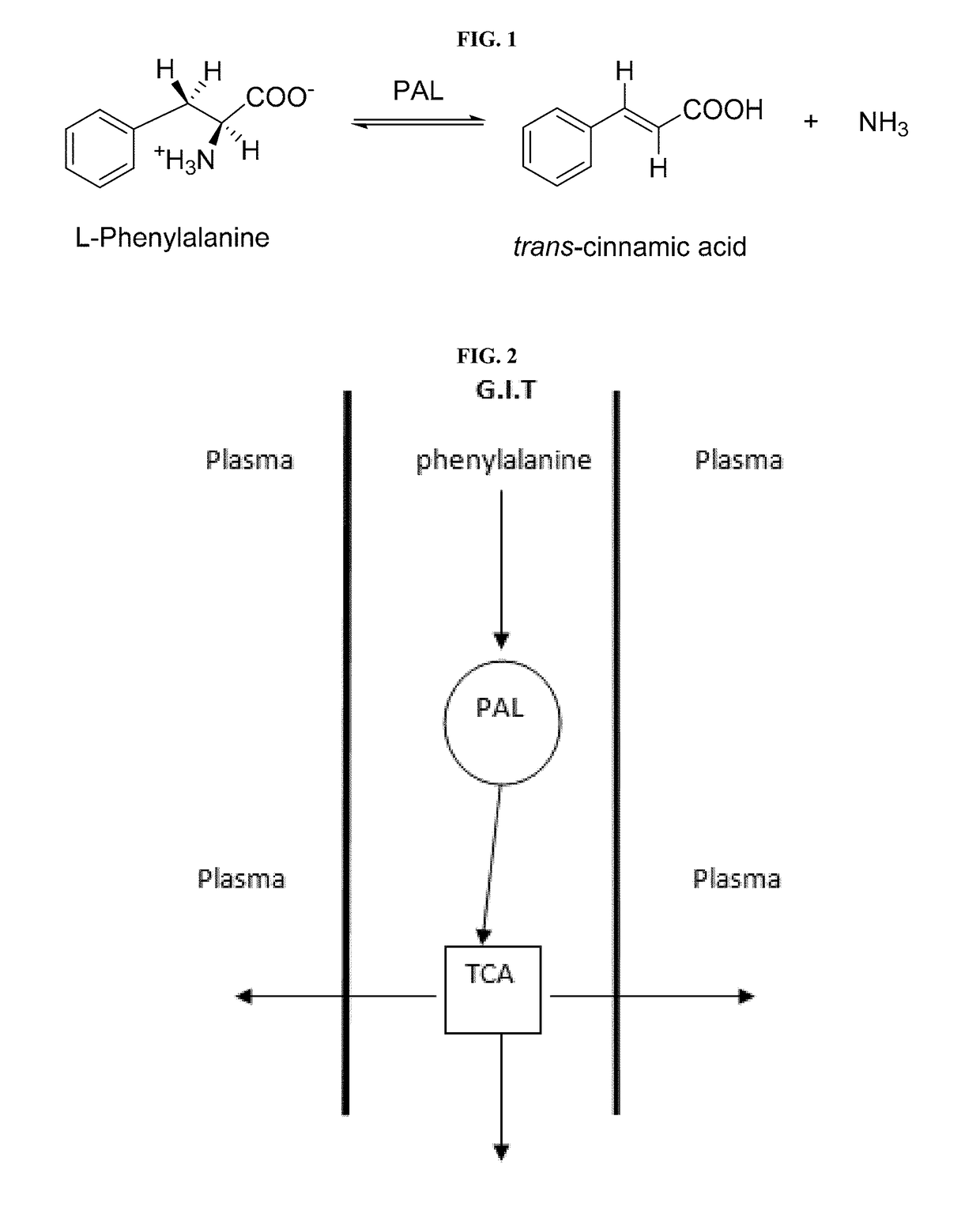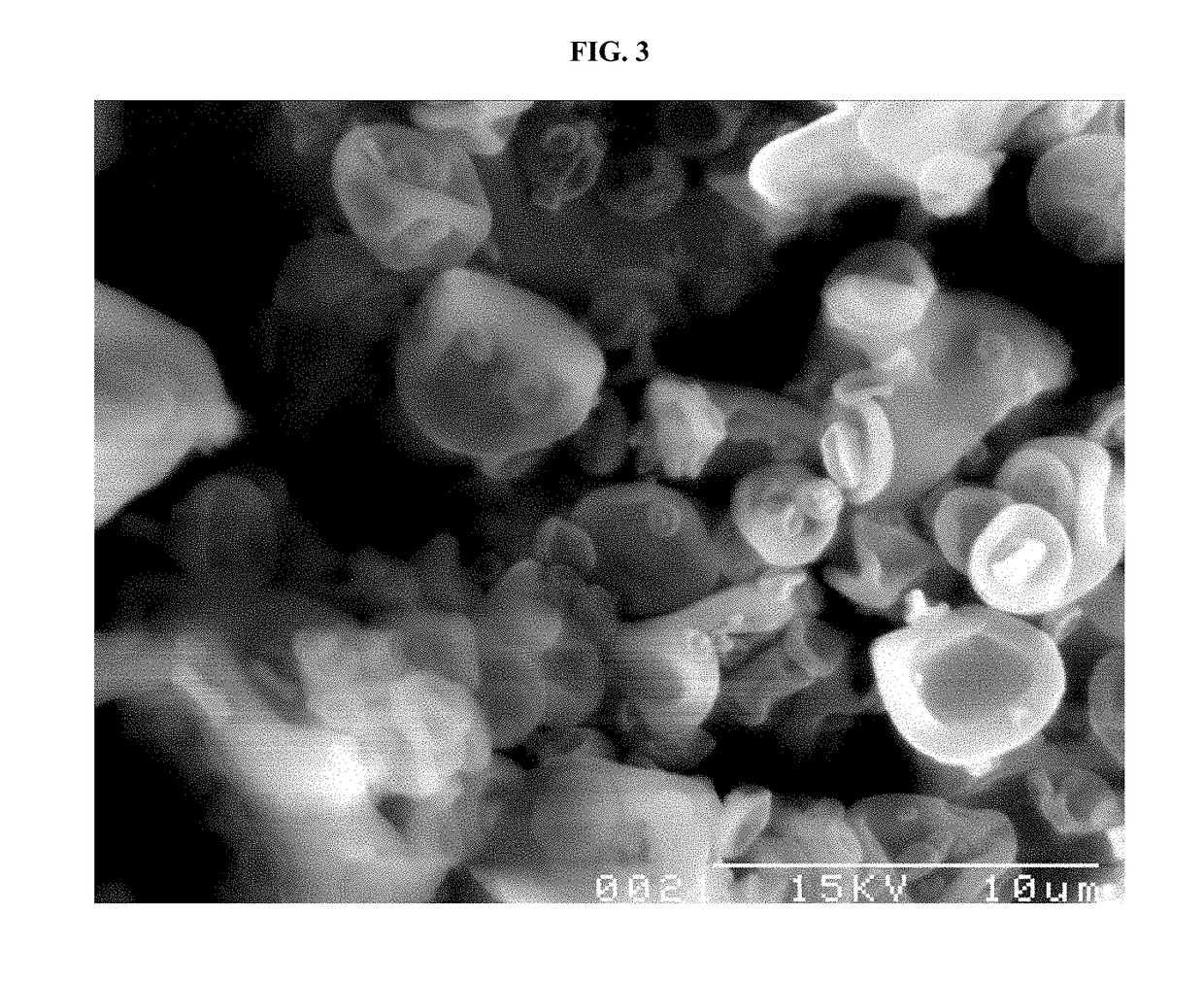Compositions and methods for the treatment of phenylketonuria (PKU)
- Summary
- Abstract
- Description
- Claims
- Application Information
AI Technical Summary
Benefits of technology
Problems solved by technology
Method used
Image
Examples
example 1
on of Blank Microspheres
[0119]2 grams of ethyl cellulose powder were dissolved in 35 mL of dichloromethane. Additional dichloromethane was added to the solution until the final solution volume was 50 mL, yielding a 4% (w / v) solution of ethyl cellulose in dichloromethane. The solution was stirred for 2 hours to ensure complete dissolution. After dissolution, the resulting solution is then spray dried under the conditions described in Table 2. The product yield over two trials was found to be 71% and 69%.
TABLE 2Conditions for spray drying ethyl cellulose in dichloromethanePolymerEthylcellulose (100 cps)Pump rate25%Inlet temperature40° C.Outlet temperature35° C.Aspirator100% Feed concentration4% (w / v)
example 2
psulation of Hemoglobin by Spray Drying
[0120]A saturated solution of hemoglobin was prepared by dissolving 3 g of lyophilized bovine hemoglobin in 15 mL of Tris buffer pH 8.5. The solution was stirred at 4° C. for a period of 2 hours. The Hb solution was filtered through a Whatman no. 42 filter paper. The final concentration of the hemoglobin solution was determined to be 13% (w / v) Hb by Drabkin's assay. A 4% (w / v) ethyl cellulose solution was prepared by dissolving 2 g of ethyl cellulose in 35 mL of dichloromethane, and then adding dichloromethane until the final solution volume was 50 mL. 500 μL of the 13% (w / v) hemoglobin solution were added to 50 mL of the 4% (w / v) ethyl cellulose in dichloromethane. The Hb was then dispersed in the ethyl cellulose solution using a probe sonicator. The water-in-oil emulsion is then spray dried using the conditions described in Table 2. The product yield of this procedure was about 69%.
example 3
Electron Microscopy of Microcapsules
[0121]The microcapsules were initially mounted on aluminum stubs (Hitachi S-450 obtained from Electron Microscopy Sciences—Hartfield, Pa.) containing ultra-smooth carbon double sided adhesive tabs (Electron Microscopy Sciences—Hartfield, Pa.). The microcapsules were sputter coated with gold in an argon environment with minimum thickness using a Denton vacuum desk V sputter coater. The morphology of the microcapsules was studied using a Hitachi S-530 Scanning Electron Microscope (SEM). The photographs (FIG. 3) were taken at a beam intensity of 15 kV.
PUM
| Property | Measurement | Unit |
|---|---|---|
| Diameter | aaaaa | aaaaa |
| Diameter | aaaaa | aaaaa |
| Diameter | aaaaa | aaaaa |
Abstract
Description
Claims
Application Information
 Login to View More
Login to View More - R&D
- Intellectual Property
- Life Sciences
- Materials
- Tech Scout
- Unparalleled Data Quality
- Higher Quality Content
- 60% Fewer Hallucinations
Browse by: Latest US Patents, China's latest patents, Technical Efficacy Thesaurus, Application Domain, Technology Topic, Popular Technical Reports.
© 2025 PatSnap. All rights reserved.Legal|Privacy policy|Modern Slavery Act Transparency Statement|Sitemap|About US| Contact US: help@patsnap.com



